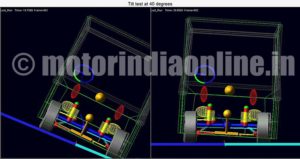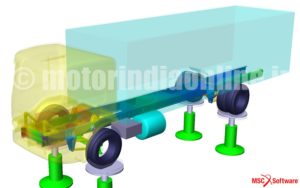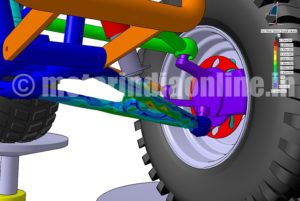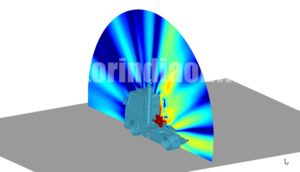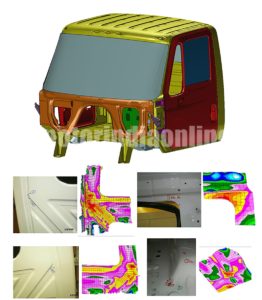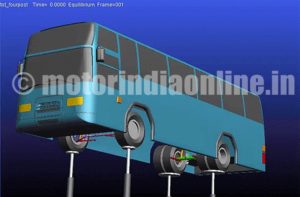How mind-boggling is it to simulate not only a vehicle to make it autonomous but to simulate the brain behind it as well? Detecting things on the road just like a human brain, knowing when to brake, slow down or speed up… well, simulation technology has livened up the world, for sure.
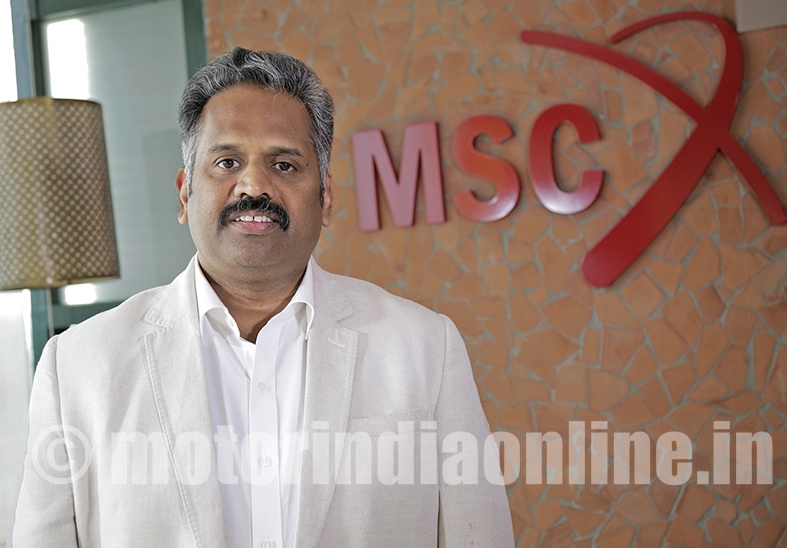
In India, though the market is slowly warming up to the subject. MSC Software Corporation, the global pioneer in this technology, is now 54 years old. Born in America in 1963, it was the brainchild of two physics professors, Richard MacNeal and Robert Schwendler. Today, MSC Software is a worldwide name in the domain of simulation technology. In India, it is 11 years old and functions as a 100 per cent subsidiary.
Prestigious origins
The two professors won the NASA contract to write the software code for structural analysis of the rocket that was to send the man to the moon called NASTRAN or NASA Structural Analysis. Later, the professors developed the code and branded it as MSC Nastran.
It was Mr. Sridhara Dharmarajan, Sr. Director & Country Manager, who set up India operations in 2006 brought it to India, “We deal with simulating the functional aspects of any manufactured product including the different physics that is involved whether in manufacturing or in operations. MSC began working in aerospace industry because it is one space where making prototypes and testing them is unaffordable. We are a gold standard today wherein certification of the parts involves analysis using MSC Nastran.”
The idea has caught on to a wide range of industries, particularly the automotive and supply chain besides consumer goods, defense, packaged goods, heavy machinery mobile phones and even bio medical.
Reality of simulation technology
Simulation technology eliminates trials and errors at the design stage. Said Mr. Dharmarajan: “Businesses cannot afford for their products to fail in the market. So they need to ensure the functionality of the product according to the given specifications while delivering optimal performance. Our technology is now capable of simulating closer-to-reality including the different levels of complexities and physics involved in a unified environment. Our vision is to reach zero physical tests before going into production.” But that is something that is easier said than done.
Simulation vs. reality
Mr. Dharmarajan admits that the vision and reality will always be divided by a chasm: “As the products get more complex, some tests may get eliminated, but there will always be a need for new tests to check for new conditions. Hence, we have acquired new companies that help us simulate newer domains. Today, we help companies to simulate the expanse of physics and produce optimized products – be it at an OEM or suppliers, which ensures that the parts are neither over-designed nor under-designed.”
MSC has helped many an OEM globally in reducing vehicle weight by more than 30 per cent.
Simulation & innovation
Simulation is imperative in today’s world, mainly for two reasons – one, a product must enter the market fast to beat competition; two, today the shelf life of a product has drastically reduced, which it makes it necessary that redesigning takes less time with Computer-Aided Engineering or CAE.
Mr. Dharmarajan is happy and says: “CAE is one of the few technologies which is growing in double digits worldwide while CAD is a commodity today growing in single digit because the base has widened.”
Today, simulating the manufacturing process for a particular part is possible. MSC boasts of a manufacturing simulation team that has created simulation software for complex manufacturing processes like welding, and forging to help manufacturing and designing companies to perform virtual experiments and manufacture products that offer realistic functionality.
And, acquisition of a German company, Simufact, is completely in alignment.
He explains: “Simufact helps us analyze the manufacturability of a part. Should the two different materials be welded, bolted or riveted together? That is where manufacturing simulation comes in offering apt solution.”
Then comes digitization where different materials that are being used together are analyzed and their combined strength is studied and simulated. And the acquisition of Digimat software from a Belgian company, e-Xstream engineering, allows engineers to build and predict performance of non-metals such as FRPs and composites which lead to light-weighting of any part.
Further, the received data helps determine the feasibility of using specific material mix to deliver better performance. According to him, ‘material and its properties is a key area for innovation today’.
Big Data For All
Simulation gives rise to generation of continuous big data. Traditionally, CAE was the forte of experts of Physics wherein the analysis done by them would greatly differ to the results obtained by an inexperienced engineer.
He says: “There is increasing pressure to do more and more simulations but there are not many experts available. Our concept, Democratization of the CAE, pushes the experts to define the process to find out say durability or crash simulation and get the entry-level engineers to use it faithfully to arrive at the same analysis and results. Our ultimate victory will be when the designers can perform CAE simulation themselves. Then, the experts can simulate only a few complex scenarios while the basic analysis can be done by the designers.”
The positive fallout of this would be that MSC is pushing simulation upfront in the product development cycle because then cost of any product can be controlled early in the design stage itself, Mr. Dharmarajan adds: “80 per cent of the product cost is fixed at 20 per cent of the design stage. So it is better to simulate at an earlier stage than later because it is simulation, not design, that tells you if the product will perform or not.”
It is especially useful with the Indian automotive industry which is poised to migrate directly from BS-IV to VI soon, is opening up a wider scope for simulation. MSC is sitting pretty with best practices from its experience in Europe and the US to help the industry make a smoother transition.
Turning a new leaf
A big transformation is sweeping the CV sector. This sector is now adopting simulation more so ever than before. Mr. Dharmarajan says: “CV sector is opting for simulation for two reasons – one, to optimize vehicle weight; and two, to offer a comfortable cabin to drivers to reduce fatigue which in turn will reduce the number of accidents. Today, CV CAE is following the trend of passenger car CAE.”
MSC is ready with solutions, software and experience to help them overcome aberrations such as noise levels, crash impact among other things in indigenous commercial vehicles. But he is also aware that the Indian automotive industry is traditionally cost sensitive. His solution is that: “We urge the OEMs to start pushing CAE downstream to their suppliers. It not only frees up their time but it also helps the component supplier to gain knowledge on how a part is designed for optimal performance. But we also take care to protect the IP of these manufacturers where they may not be comfortable in sharing the nuances of their business with the OEMs.”
MSC realizes that the company’s growth will be driven by Tier-1 component suppliers when they start doing simulations too. Currently, MSC supplier base penetration stands between 12 and 15 per cent. He shares: “We show the suppliers the difference between their components and similar ones made across the globe. Here, the parts are heavy and over-designed. If they simulate prior to manufacturing, they can compete better.” He is also aware that the suppliers need to be educated more so that they gain confidence to use this technology and reap benefits, like those in North America and Europe.
Optimistic outlook
MSC holds an optimistic outlook for business growth in India, Mr. Dharmarajan feels: “Our product development center in Pune, with more than 200 engineers, is constantly developing new versions of the software with new and improved functionalities. There are some modules which are being developed completely here in India.”
So, if you as a manufacturer wish to make a product that performs right the first time, then it is time that you adopted simulating reality to be able to deliver certainty.
